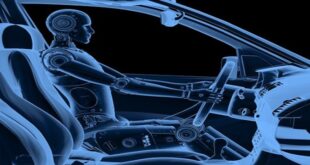If you managed to goof up your headlight adjusting screws, or if you just aren’t sure whether your headlights are properly aligned, you can perform a simple check. When you’re driving on a fairly straight road at night, see if your headlights appear to be shining straight ahead and are low enough to illuminate enough of the road in front of you to enable you to stop safely if an obstruction appears. Be sure to check your headlights on both high and low beams.
You can also have headlights checked and aligned professionally. Auto repair facilities often have headlight-aiming equipment to check and set your headlights in accordance with state laws. Some are certified Motor Vehicle Bureau inspection stations.
Note, though, that if you go to a repair facility that does MVB inspections just to see whether your headlights are aimed properly, you’ll probably have to pay them for checking the lights and for an inspection certificate whether or not they have to adjust your lights.
A cheaper way to check out headlight adjustment is to contact a highway patrol station. The station may have the equipment to check your headlights for you or be able to tell you where their current highway checkpoints are so that you can check the lights yourself.
Of course, if the highway patrol finds that your headlights aren’t in focus or finds anything wrong with your vehicle’s emissions, you’ll have to get the problem fixed within a stipulated period or face a fine. If you try to fix the alignment problem yourself by turning the adjustment screws on your headlights, go back to the checkpoint afterward for a certificate saying that the lights have been adjusted and meet the proper standards. This certificate is usually part of the price.
Replacing directional signals
Directional signals are usually easy to replace. On some vehicles, you have to remove the frame from around the signal to reach the bulb. On others, you can access the bulb from the trunk. If any of your directional signals stop flashing or don’t flash in synch, or if the directional signal indicators on your dashboard don’t flash, the signal lights themselves may not be malfunctioning. You can find information about troubleshooting directional signals.
This chapter introduces you to a traditional fuel system. The fuel system shown in 7-1 stores and delivers fuel to the combustion chambers of the engine so that it can be burned efficiently. Although most fuel systems have some basic components in common, fuel systems do vary.
Most modern vehicles employ fuel injectors to get the fuel to the engine, whereas vehicles built before the mid-1980s usually relied on carburetors. Since many of the basic parts covered in this chapter either are common to both systems or do the same jobs as their counterparts on carbureted vehicles did, this chapter is relevant no matter which type of vehicle you have.
Today, in addition to vehicles that run on gasoline, there are a number of other fuel systems around. If your vehicle has a diesel engine, be sure to read 9, which helps you understand and maintain a diesel engine and covers eco-friendly biodiesel and clean diesel models.
Last word
There are hybrid vehicles that generate their own power, so they can use electric motors to augment traditional gasoline engines when necessary and can even run on all-electric power at times. Other eco-friend.
 Jobsearchdone.com Top News Share Website
Jobsearchdone.com Top News Share Website




